Endorsements for Nov. 7th Statewide Ballot Measures
On November 7th, Texans will go to the polls to decide the fate of 14 constitutional amendments. The Sierra Club is recommending a NO vote on Prop 7 and a YES vote on Prop 14.
Early voting is October 23rd through November 3rd. This document has early voting locations & hours. Submit this form to find your polling location.
There's more information about the amendments, including pro- and con- arguments, in this League of Women Voters guide.
Vote NO on Prop 7: The "State Energy Fund"
Sierra Club urges Texans to vote NO on Prop 7, which has a misleading title of the “Texas Energy Fund.” It’s even more misleading when you read the description: “...providing for the creation of the Texas energy fund to support the construction, maintenance, modernization, and operation of electric generating facilities.”
Sounds okay, right? We need more power, right? Well, what this constitutional amendment would do, if approved, is create a low-interest loan and grant program designed to subsidize what will most likely be new or expanded fracked gas power plants and little else.
What they don’t tell you is that they have been pushing a pro-fossil fuel subsidies and anti-renewables agenda, despite the fact that most energy analysts have concluded that solar and wind power strengthen the grid and help keep electric bills low. They also like to downplay the fact that fossil fuel infrastructure was heavily to blame for the power outages during Winter Storm Uri.
See also: No on Prop 7 talking points
Vote YES on Prop 14: The Centennial Parks Conservation Fund
We are proud to be a part of the Texas Coalition for State Parks, a group of 90 organizations educating voters about the Centennial Parks Conservation Fund — Proposition 14 — on the ballot this fall. This $1 billion fund will help secure new parks for future generations of Texans to explore and enjoy without increasing taxes.
What is Prop 14?
Prop 14 will create the Centennial Parks Fund, a $1 billion fund that will help secure new parks for future generations of Texans to explore and enjoy without increasing taxes. The Fund will allow the Texas Parks & Wildlife Department to buy land from willing sellers when unique properties that would make for beautiful state parks become available. The fund also allows for the development of these new state parks.
Why is this important?
Investing in parks conserves land and water resources, which protects Texas’ quality of life so future generations can enjoy our land, water, and natural beauty the way we do. Texas State Parks attract nearly 10 million visitors annually, and current state parks can’t keep up with the demand of our increasing population. With the rapid growth of Texas, we must protect Texas’ last remaining natural areas today so that they won’t be lost forever to development. Putting Prop 14 on the ballot comes at a time when our state is continuing to experience tremendous growth. Texas is home to 7 of the top 15 most rapidly growing cities in the country.
For more information or to access our social media platforms and share our posts, please visit: GrowTexasParks.org.
by Lone Star Chapter of the Sierra ClubFood Insecurity & Benefits of Community Gardens
Our November Eco Study Tour is today, Wednesday, November 1st! Download this flyer for information and to register.
by Arthur Dawes, Alamo Group Executive Committee memberThe Hidden Environmental Impact of Retirement Savings
When it comes to decarbonizing our society, people often view bottom-up personal action as distinct from top-down systemic change. But there are several areas where these two kinds of activism intersect. One of them is money.
On average, $125,000 in a personal savings or retirement account causes as much greenhouse gas emissions as an average American: about 16 tons/year (CO2 equivalent). This is because many banks loan money to fossil fuel companies, and many investment firms and mutual funds invest in these companies.
For those of us who are able to set aside money in savings accounts and retirement funds, it is essential that we move our money into sustainable investment options right away, since this is a relatively easy way to have a big impact. Unfortunately, this is easier said than done. There are few standards governing how publicly traded companies report their emissions, so most reporting is voluntary.
I recently spent several afternoons digging through shareholder reports for some of the largest publicly traded companies in the US, and I found that emissions data are both hard to find and not standardized. This also makes it difficult for mutual funds to quantify their environmental impact. Some investment firms have compiled data quantifying the greenhouse gas emissions per dollar invested in various stocks and mutual funds, but these are only available through brokers for a fee.
In spite of these challenges, there are steps that we all can take. We can urge our elected officials to enact more stringent and standardized reporting requirements. For those of us with investment or retirement accounts (401k’s, IRAs, etc.), we can ask our financial advisers to choose investments that exclude fossil fuel companies. If there is enough demand for sustainable investment options, perhaps investment firms will offer more of these options. For those of us with savings accounts, checking accounts, or credit cards, we can choose banks that do not finance fossil fuel projects. (Chase is the worst offender in this regard.)
Although I cannot recommend specific investment options or banks, this website is a good place to start looking for more information. Let’s accelerate a systemic change away from fossil fuels by investing and saving our money more sustainably.
by Sam Greene, postdoctoral researcher at the University of Texas at AustinThere will be no General Meeting of the Alamo Group this month because of the Thanksgiving holidays.
Deer Surprisingly Deadly
According to Ben Goldfarb’s Crossings: How Road Ecology Is Shaping the Future of Our Planet (2023):
Cars have made deer North America‘s most dangerous wild animal, implicated in three times more deaths than wasps and bees, forty times more than snakes, and four hundred times more than sharks.
Extreme Heat Hurts Texas Economy
From Hotter summer days heat up Texans but chill the state economy, October 18, 2023, Federal Reserve Bank of Dallas:
Analyses drawing on data from 2000–22 indicate Texas is especially vulnerable to hotter summers. For every 1-degree increase in average summer temperature, Texas annual nominal GDP growth slows 0.4 percentage points. With this year's summer temperatures 2.5 degrees above the post-2000 average, estimates for Texas suggest, all else equal, the summer heat could have reduced annual nominal GDP growth by 1 percentage point for 2023, or about $24 billion.by Bill Barker, FAICP, FITE, Alamo Group Executive Committee member
Grand Staircase-Escalante National Monument: Singing Canyon and Upper/Lower Calf Creek Falls
A few of the hikes with grand vistas in GSENM. Another neat area, Wolverine Canyon and Wolverine Petrified Wood Area, was the subject of an article in the July 2021 issue of this newsletter.
Singing Canyon
Singing Canyon is just north of Burr Trail road, 11.5 miles east along Burr Trail from the junction with UT hwy 12 in Boulder. It is an easy short hike from the parking area. Deer Creek campground is just north of Burr Trail about half way from Boulder.
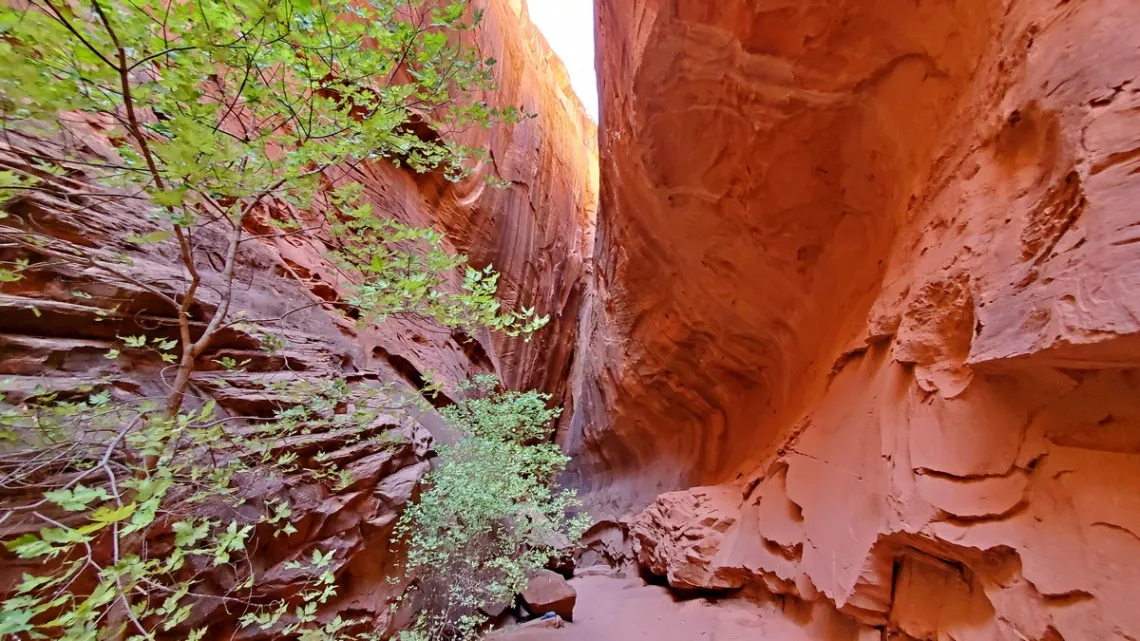
Upper and Lower Calf Creek Falls
Calf Creek begins a mile or so above the Upper Falls (next two pictures), then runs about 3 miles to the Lower Falls (last two pictures). It joins the Escalante River about 2 miles below the Lower Falls trailhead. The Escalante runs from there 90 miles or so southeast to the Colorado (Lake Powell).
Here's a particularly good page with many pictures of both these hikes including some stuff I missed.
Upper Calf Creek Falls is 2.2 mile round trip, 730' elevation change each way. The unsigned trailhead parking area is 5.5 miles south along UT hwy 12 from the north turn of the highway in Boulder. Some people likely camp at-large in the parking area; no services.
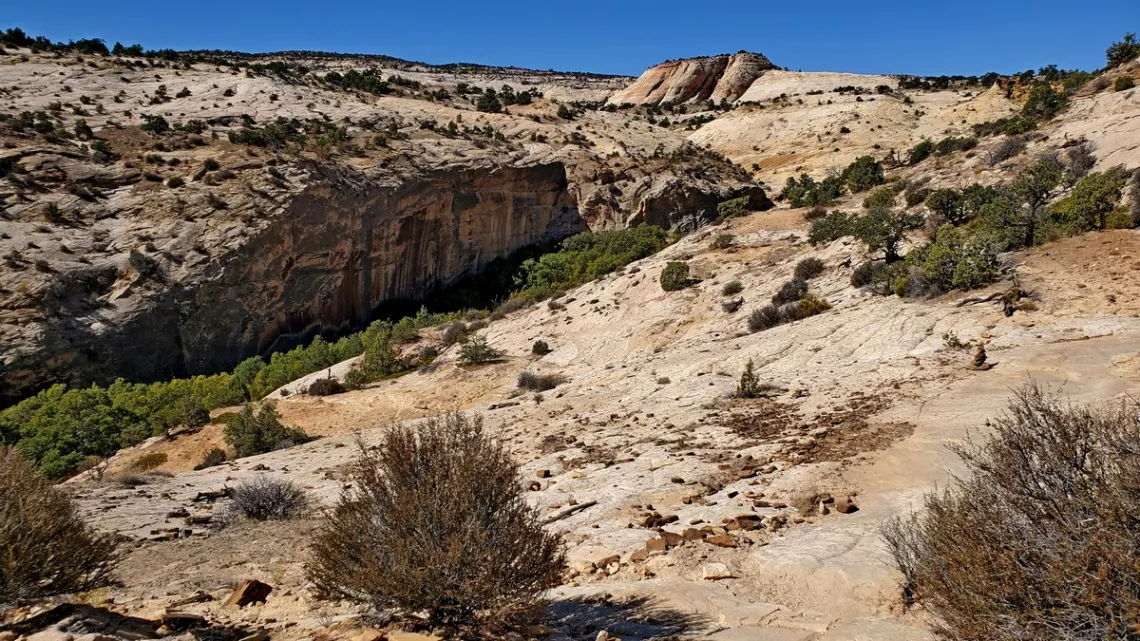
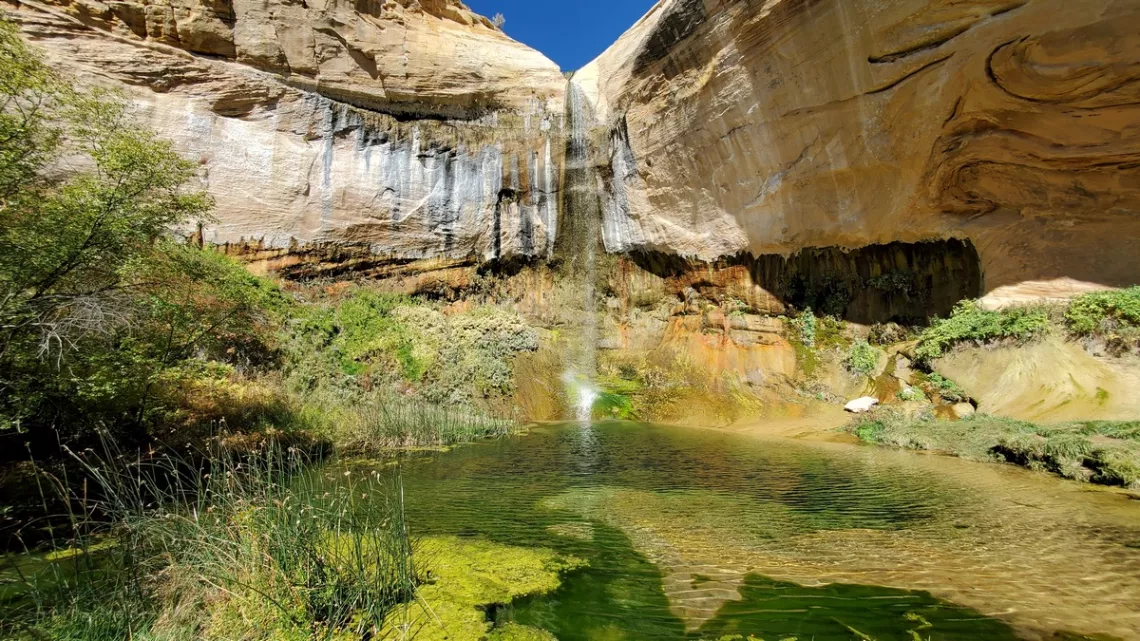
Lower Calf Creek Falls is a moderate 6 mile round trip with little elevation change. A lovely meander through the canyon beside the creek. The trailhead is just off UT hwy 12, 11 miles south of Boulder and 15 miles east of Escalante. Here's a page with good pictures. At the trailhead is Calf Creek campground which was full both times I stopped there.
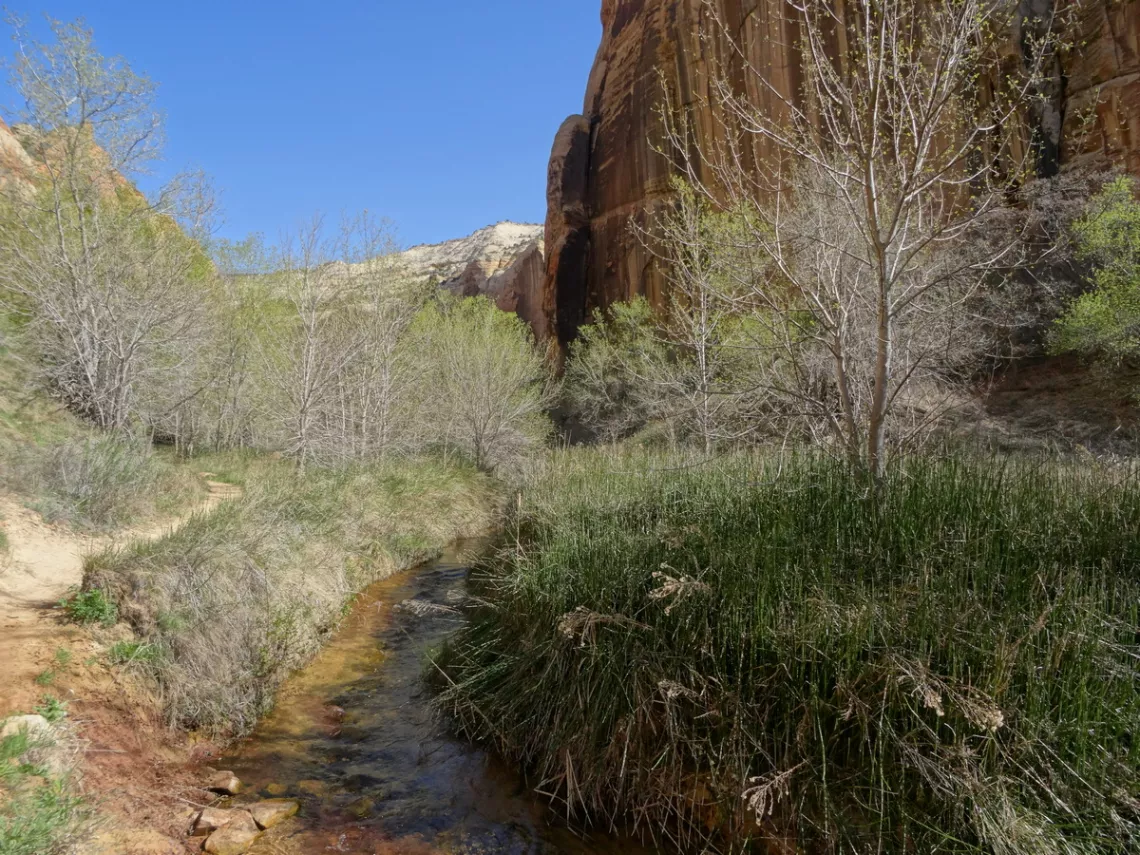
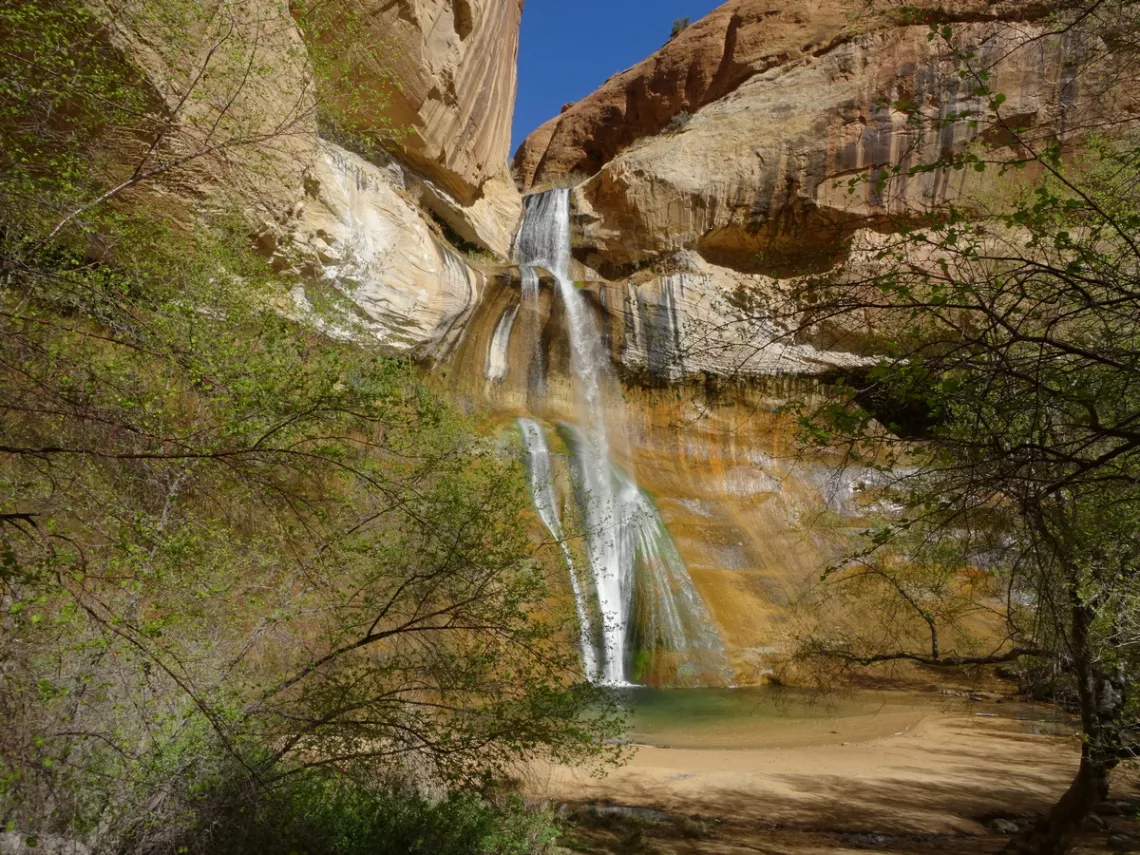

Outings: The Call of the Wild
Visit the Alamo Sierra Club Outings page on Meetup for detailed information about all of our upcoming Sierra Club Outings.
The Alamo Sierran Newsletter
Richard Alles, Editor
Published by the Alamo Group of the Sierra Club, P.O. Box 6443, San Antonio, TX 78209, AlamoSierraClub.org.
The Alamo Group is one of 13 regional groups within the Lone Star Chapter of the Sierra Club.
Changed your contact information?
If you're not sure whether the Sierra Club has your current email address, send an email to Member Services with your name and address and/or member ID (see Locating Your Member ID) so they can add your email address to your member record.
Have you moved? Let us know by sending your old address, your new address and your member ID to: address.changes@sierraclub.org.
Go online for the latest news and events
 |